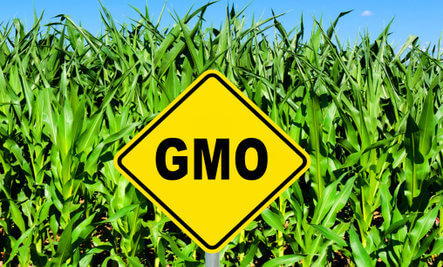This article originally ran at Forbes and has been republished here with permission of the author.
In spite of two decades of stunning scientific, humanitarian and financial successes and an admirable record of health and environmental safety, the application of genetic engineering to agriculture is still beleaguered by activists. And they will be out in force on Saturday (25 May) for the “March Against Monsanto,” which will be marked by numerous events worldwide to protest the company’s prominence in the production of genetically engineered crop plants.
In the past, the participants in such events have resembled a cross between Halloween trick-and-treaters in weird costumes and the 19th century Luddites who destroyed labor-saving textile machinery.
But anti-genetic engineering activism is far from being all fun and games. When the activists are unable to sway public opinion with flagrant misrepresentations or to intimidate regulators into rejecting or delaying products, they often resort to harassment with nuisance lawsuits and even to vandalism of field trials. Their stock in trade is The Big Lie – namely, that the application of molecular methods of genetic improvement is unwanted, unneeded, unsuccessful and unsafe. These allegations have been debunked repeatedly over the years, as they are once again in a newly-released analysis from U.K.-based PG Economics and published in the peer reviewed scientific journal GM Crops.
Farmers certainly don’t believe that genetic engineering is unwanted, unneeded or unsuccessful. The net economic benefit at the farm level in 2011 was $19.8 billion, equal to an average income premium of $329/acre. For the 16 year period 1996-2011, the global farm income gain was $98.2 billion. Of the total farm income benefit, 49% ($48 billion) was due to yield gains resulting from lower pest and weed pressure and improved genetics, with the balance arising from reductions in the cost of production.
The insect-resistance technology used in corn and cotton has consistently delivered yield gains from reduced pest damage. The average yield gains over the 1996-2011 period across all users of this technology were 10.1% for insect-resistant corn and 15.8% for insect-resistant cotton.
What kinds of farmers benefit from genetically engineered crops? About half (51%) of the 2011 farm income gains went to farmers in developing countries, 90% of whom are resource-poor, small operators. Cumulatively (1996-2011), the benefits were again divided about equally between farmers in developing and developed countries.
According to the PG Economics analysis (as well as many others), genetically engineered crops offer important benefits in addition to improvements to the bottom line.
First, their use has obviated the need to cultivate vast additional amounts of arable land. Between 1996 and 2011, genetically engineered crops were responsible for the production of an additional 110 million tons of soybeans, 195 million tons of corn, 15.8 million tons of cotton lint and 6.6 million tons of canola. If modern genetic engineering had not been available to the 16.7 million farmers using the technology in 2011, maintaining global production levels at the 2011 levels would have required additional plantings of 13.3 million acres of soybeans, 16.3 million acres of corn, 8.15 million acres of cotton and 490,000 acres of canola. This total area requirement is equivalent to 9% of the arable land in the United States.
Second, the cultivation of genetically engineered crops has reduced significantly the release of greenhouse gas emissions from agricultural practices. This is due to less fuel use and additional sequestration of carbon from reduced tillage with the cultivation of genetically engineered crops, as compared to conventional varieties. In 2011, this was equivalent to removing 23 billion kg of carbon dioxide from the atmosphere or to removing 10.2 million cars from the road for a year.
Third, the cultivation of pest-resistant genetically engineered crops reduced pesticide spraying by 474 million kg (-9%) between 1996 and 2011. This decreased the environmental impact associated with herbicide and insecticide use on the area planted to genetically engineered crops by 18.1%.
Are genetically engineered products safe? There is a long-standing consensus in the scientific community that the newer techniques of genetic engineering are essentially an extension, or refinement, of earlier methods for genetic improvement. As long ago as 1989, a National Research Council analysis concluded, “Crops modified by molecular and cellular methods should pose risks no different from those modified by classical genetic methods for similar traits. As the molecular methods are more specific, users of these methods will be more certain about the traits they introduce into the plants.”
And according to the Society of Toxicology, “There is no reason to suppose that the process of food production through biotechnology leads to risks of a different nature than those…created by conventional breeding.”
Even the notoriously risk-averse FDA “is not aware of any information showing that foods derived by these new methods (plant biotechnology) differ from other foods in any meaningful or uniform way, or that, as a class, foods developed by the new techniques present different or greater safety concern than foods developed by traditional plant breeding.” For that reason, the FDA does not discriminate against genetic engineering techniques; rather, the degree of regulatory scrutiny depends on factors related to risk, such as whether a new food contains a substance completely new to the food supply, has higher levels of an endogenous toxin, or presents an allergen in an unexpected milieu.
When the naysayers remonstrate that genetically engineered foods have not been proven safe for human consumption, they are ignoring that to ensure their safety, all genetically engineered crops are extensively tested for toxins, allergens, and nutritional value before being marketed. In fact, as a group, they are the most tested food products sold today. Conventionally bred crops and varieties, in contrast, undergo no systematic, routine testing for safety or nutritional value; and several, including two varieties each of potatoes and squash and one of celery, have sickened or killed consumers. Such mishaps are far less likely with the use of modern techniques of genetic engineering.
The antagonists of genetic engineering frequently call attention to the absence of human feeding studies of genetically engineered plants, but to anyone familiar with food science, that is an (obviously) unrealistic expectation. The safety of any new genetically engineered crop is carefully tested in the laboratory, in the field, and in animals. It is impossible, however, to design a meaningful long-term feeding test in humans, because it would require the intake of large amounts of a particular food or ingredient over a significant portion of the human life span. Who would be willing to consume for decades a fully standardized diet (essential if one wishes to compare groups and isolate the effects of the food under study) that is comprised of, say, 30 percent soybeans, corn or papaya?
This is why no existing food or food ingredient — conventional or genetically engineered — has been subjected to this type of testing. Academic toxicologists and food safety officials around the world agree that long-term feeding tests in humans are not only virtually impossible to perform but are not necessary to establish safety.
Since 1996, there has also been an outpouring of data, including prodigious amounts of peer-reviewed risk-assessment research, that provides strong evidence in support of the safety of genetically engineered crops and the foods made from them. During those 17 years, there has been no credible scientific evidence that genetically engineered foods or ingredients cause allergies or any other acute or long-term negative health effects. Several trillion meals containing genetically engineered food ingredients have been consumed by people around the world, with not a single adverse effect documented.
None of these findings should be a surprise. For decades, the scientific community has regarded the use of molecular techniques for genetic engineering as part of a seamless continuum of the genetic improvement of plants – a refinement of earlier methods.
It’s long past time we got past the pseudo-controversies fomented by anti-technology activists and more fully exploited the commercial and humanitarian advantages of genetic engineering applied to agriculture.
Contributing author Graham Brookes is an economist and co-director of UK-based PG Economics Limited.
Henry I. Miller, a physician, is the Robert Wesson Fellow in Scientific Philosophy & Public Policy at Stanford University’s Hoover Institution. He was the founding director of the FDA’s Office of Biotechnology. Follow him on Twitter @henryimiller.






